While energy prices and energy market reforms will take the center stage in public debates on the EU’s actions in the energy crisis, EuropeOn is looking forward to contributing to a regulatory framework that will help avoid such future crises.
First and foremost, the review of the Energy Performance of Buildings (EPBD) will be discussed in the European Parliament and among Member States’ representatives in the coming months. The Parliament’s Energy Committee is set to adopt its position on the Commission proposal by the end of October, which will give us a more concrete idea of where this Directive is headed.
In the run up to the Committee vote, EuropeOn will make sure the voice of electrical contractors and installers is heard. In practice, our members’ input to make this EPBD a success for energy performant buildings through safe and renewable electrification is articulated around 5 key points:
- Skills & workforce: the EPBD should ensure this dimension is well considered in national plans for renovations and improvements in energy performance of the national building stock. To this end, national authorities should conduct assessments of the gap between available and needed professionals to reach their targets, which would form the basis for adequate action in this regard.
- Energy Performance Certificates: this essential tool to track the energy efficiency of buildings and of national building stocks should evolve in order to allow Member States to use final energy as the main indicator of energy performance. This will remove a de facto incentive for fossil fuels, which comes from using primary energy as the main indicator.
- Electrical installations: as we move towards decarbonised and zero-emission buildings, electrical installations will become increasingly important as the backbone of future buildings. They will connect and integrate solar panels, heat pumps, EV chargers, automation systems etc to make the most of the renewable electricity available to buildings. As such, the EPBD must duly consider electrical installations as Technical Building Systems, mandate inspections and proper dimensioning.
- E-mobility: EVs are steadily becoming the norm and we know about 90% of charging takes place in buildings. Therefore, the EPBD must ensure consumers can easily install charging points in buildings. The most cost-effective way to do this is to pre-cable or pre-duct all parking spaces to facilitate the installations of chargers at a later date. This will address the decarbonisation of transport and enable buildings to play their full role in providing flexibility to the power system.
- Building Automation and Control Systems: this cost-effective solution to increasing the energy efficiency of buildings was already part of the previous EPBD but should now be strengthened.
Read EuropeOn’s full position on EPBD.
On the non-legislative side, this autumn will also see the update of another critical tool for energy efficiency and for the phase out of fossil fuels. The Primary Energy Factor (PEF) will be reviewed for the first time since 2018. The PEF is a rather technical but central tool to account for energy savings in final energy and convert them into primary energy. This is especially impactful for electricity, which is heavily disadvantaged by the PEF, particularly in comparison to fossil fuels.
In practice, this tool is used when Member States have to report on their energy savings targets under the Energy Efficiency Directive, when Energy Performance Certificates for buildings are expressed in primary energy and when energy labels and ecodesign requirements are drawn up for energy-consuming products.
Under the current scheme, electricity consumed by end-users is counted 2.1 times in each legislation. For instance, an appliance that consumes 100kWh/year of electricity from the household plug will have an energy label that says it consumes 210kWh/year. On the other hand, fossil fuel appliances do not have such a multiplier.
This means electric end-uses appear to be 2.1 times more energy intensive than what they really are! This is a big incentive for fossil fuels that cannot be justified, especially not in the current situation, where phasing out fossil fuels is the most urgent priority for Europe, to become independent from Russia, from costly imports, and to drastically reduce CO2 emissions.
Stay tuned for our next publications and outreach on the EPBD or on the PEF and do not hesitate to get in touch with us if you feel the same way!
How to reach us: info@europe-on.org
